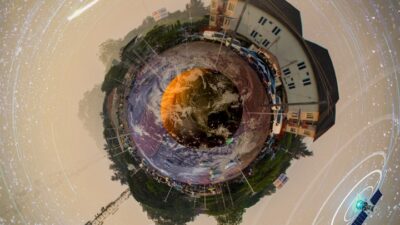In an era marked by technological advancement, the agricultural sector is undergoing a significant transformation driven by the integration of the Internet of Things (IoT). This convergence of agriculture and technology, commonly referred to as Smart Agriculture, is not only enhancing productivity and efficiency but also promoting sustainability. As global population continues to rise, the need for innovative farming solutions has never been more pressing.
What is Smart Agriculture?
Smart Agriculture leverages IoT technologies such as sensors, drones, and data analytics to monitor and manage farming operations in real-time. By connecting devices and machinery to the internet, farmers can collect and analyze data related to various factors, including soil conditions, crop health, weather patterns, and resource usage. This data-driven approach enables more precise decision-making, ultimately leading to better yields and reduced environmental impact.
Key Components of IoT in Agriculture
-
Sensors: These devices are crucial for gathering data about soil moisture, temperature, humidity, and nutrient levels. By installing sensors throughout their fields, farmers can receive real-time insights that allow them to optimize irrigation, fertilization, and pest control.
-
Drones: Armed with high-resolution cameras and mapping software, drones can monitor crop health, identify pest infestations, and assess soil conditions from above. This aerial perspective offers a comprehensive view of entire farms that would be difficult to obtain through traditional scouting methods.
-
Data Analytics: The vast amount of data collected from sensors and drones needs to be processed and analyzed to yield actionable insights. Advanced analytics tools can identify trends, predict outcomes, and provide recommendations tailored to specific farming practices.
- Automation: Robotics and automated machinery are becoming increasingly sophisticated, enabling tasks like planting, watering, and harvesting to be performed with minimal human intervention. This not only reduces labor costs but also improves precision.
Benefits of Smart Agriculture
-
Increased Efficiency: IoT technologies streamline operations by automating repetitive tasks and optimizing resource usage. For example, smart irrigation systems can determine the best times to water crops based on real-time soil moisture data, conserving water and reducing costs.
-
Enhanced Crop Yield: By monitoring crops closely and applying treatments only when necessary, farmers can improve yields significantly. Real-time data allows for timely interventions, such as pest control or nutrient application, ensuring healthier crops.
-
Sustainable Practices: Smart Agriculture promotes environmentally friendly practices. By minimizing over-fertilization and pesticide use, farmers can reduce their ecological footprint. Additionally, precision agriculture helps in conserving water resources, a critical aspect in areas facing water scarcity.
- Cost Savings: Ultimately, the efficiency brought about by IoT leads to reduced operational costs. With better resource management, reduced waste, and enhanced crop yields, farmers can expect improved bottom lines.
Challenges and Considerations
Despite the numerous advantages, there are challenges associated with implementing IoT in agriculture:
-
Initial Investment: The cost of smart technologies can be steep, especially for small-scale farmers. Access to funding and affordable technology solutions is critical for broader adoption.
-
Technical Expertise: Farmers may require training to effectively utilize new technologies. Bridging the knowledge gap is essential for the successful integration of IoT solutions.
-
Data Security: As with any technology that relies on connectivity, concerns regarding data privacy and security need to be addressed. Ensuring robust cybersecurity measures is paramount.
- Variation in Agricultural Practices: Different crops and farming methods may require customized IoT solutions. The lack of a one-size-fits-all approach can complicate implementation and scale.
The Future of Smart Agriculture
The potential of Smart Agriculture is immense, poised to shape the future of farming. As technology continues to evolve, we can expect even greater advancements, such as artificial intelligence-driven decision-making, blockchain for supply chain transparency, and enhanced connectivity through 5G networks.
In conclusion, the integration of IoT in agriculture is revolutionizing the way we grow food. By embracing smart technologies, farmers can not only meet the demands of a growing population but do so in a sustainable and economically viable manner. The rise of Smart Agriculture is not just a trend; it’s a necessary evolution towards a more efficient and sustainable food production system.


